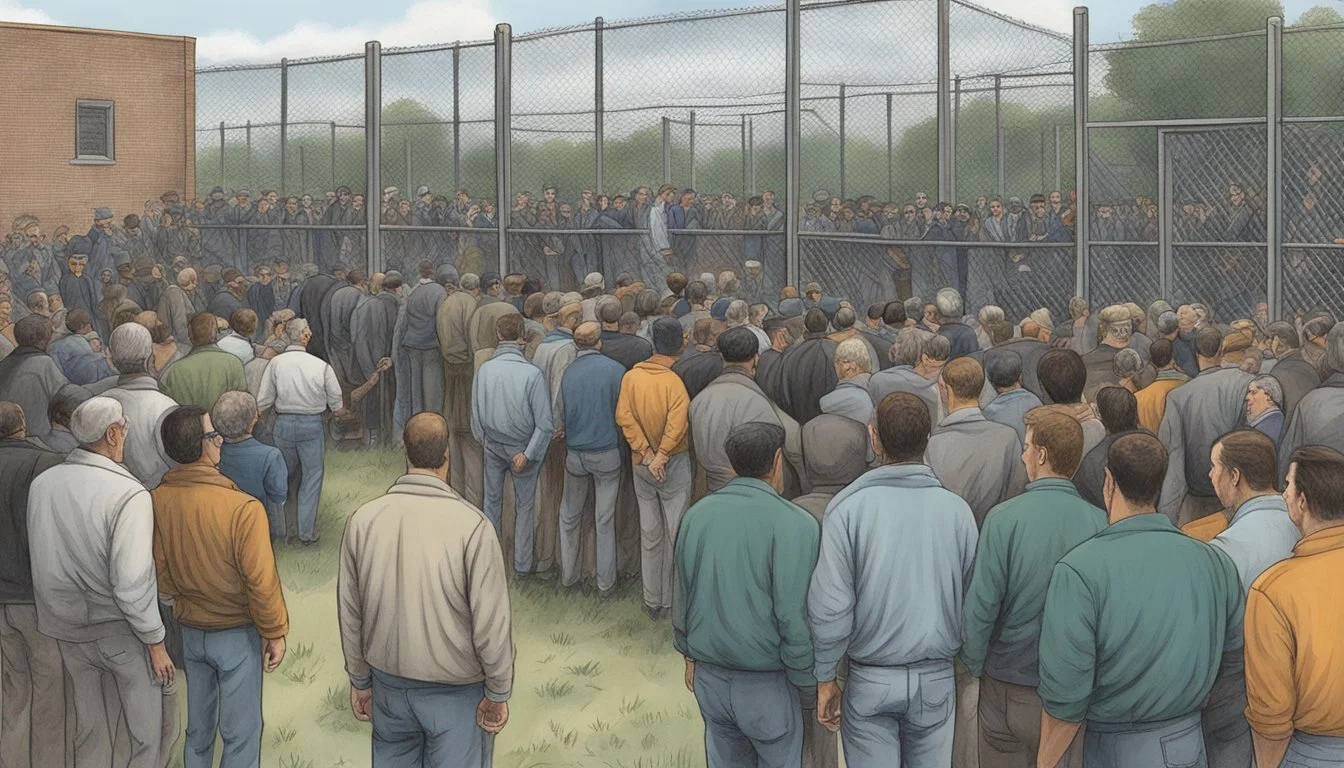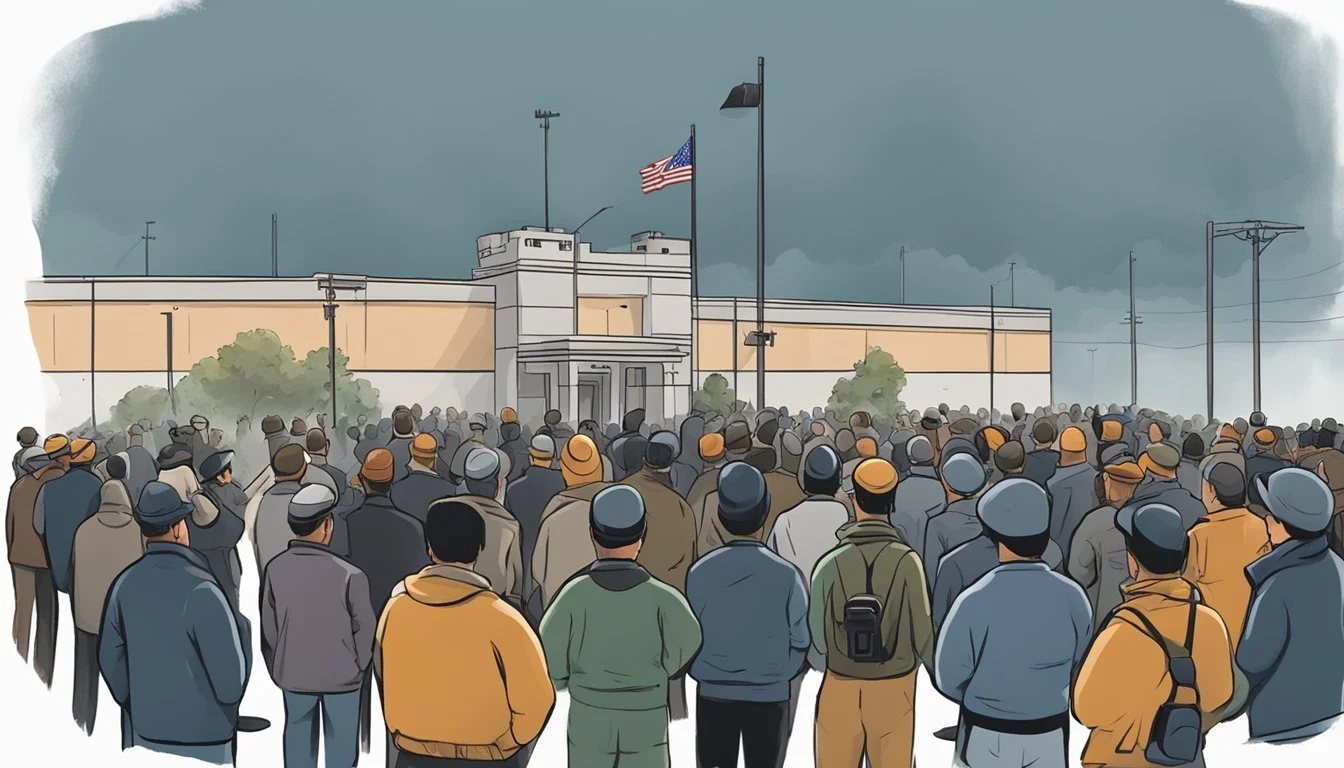Danny Rolling's Final Chapter: Gainesville Ripper's Execution Day
Justice Served After Decades of Waiting
Danny Rolling, infamously known as the Gainesville Ripper, faced his final moments on October 25, 2006, at Florida State Prison. The execution of this notorious serial killer marked the end of a dark chapter in Florida's history, bringing a measure of closure to the families of his victims. Rolling had terrorized the college town of Gainesville in August 1990, brutally murdering five students over a four-day period.
The Gainesville Ripper's crimes shocked the nation with their savagery. Rolling raped, mutilated, and in some cases decapitated his victims, leaving a trail of horror that would haunt the community for years to come. His actions not only devastated families but also instilled fear in college campuses across the country.
As Rolling's execution day approached, attention once again turned to his heinous acts and the lives he had taken. The event drew media coverage and reignited discussions about the nature of evil and the justice system's response to such brutal crimes. For many, the Gainesville Ripper's death by lethal injection represented the final page in a gruesome story that had begun 16 years earlier.
Early Life and Background of Danny Rolling
Danny Rolling's troubled upbringing and early experiences shaped his path toward becoming a notorious serial killer. His life was marked by abuse, instability, and a gradual descent into criminal behavior.
Turbulent Childhood and Abuse
Danny Harold Rolling was born on May 26, 1954, in Shreveport, Louisiana. His father, James Rolling, was a police officer known for his volatile temper and abusive behavior. Danny and his brother endured frequent physical and emotional abuse at their father's hands.
The Rolling household was characterized by tension and fear. James would often fly into violent rages, beating his wife and children. This tumultuous environment left deep psychological scars on young Danny.
As a child, Danny exhibited signs of emotional disturbance and struggled to form healthy relationships. He was diagnosed with a personality disorder in his youth, which likely contributed to his later criminal actions.
Military Service and Subsequent Divorce
In 1971, at age 17, Danny Rolling enlisted in the United States Air Force. He served for two years before being discharged due to drug use and behavioral issues. His military career was short-lived and unsuccessful.
After leaving the Air Force, Rolling married O'Mather Halko in 1974. The marriage produced a daughter but was plagued by Rolling's increasing alcohol problems and unstable behavior. Unable to maintain steady employment, his relationship deteriorated.
The couple divorced in 1977, marking another failed attempt at stability in Rolling's life. This separation further fueled his feelings of rejection and inadequacy.
Descent into Criminal Behavior
Following his divorce, Rolling's life took a darker turn. He began engaging in petty crimes, including robbery and burglary. His criminal record grew as he moved between various states, unable to settle or find legitimate work.
In 1979, Rolling was arrested for his first major offense - armed robbery. He spent time in and out of prison throughout the 1980s, with each release followed by new crimes.
Rolling's behavior became increasingly erratic and violent. He developed a fascination with true crime stories and began to fantasize about committing more serious offenses. This period marked the transition from petty criminal to the violent predator he would become.
The Gainesville Murders: A Timeline
Danny Rolling's violent rampage in Gainesville, Florida unfolded over four days in August 1990. The murders shocked the college town and sparked widespread fear among students and residents.
First Attacks on Students
On August 24, 1990, Rolling began his killing spree. He broke into the apartment of Christina Powell and Sonja Larson, two 17-year-old University of Florida freshmen. The young women were brutally murdered in their home.
Rolling's method was ruthless. He raped his victims before killing them. The crime scene was gruesome, with evidence of torture and mutilation.
Gruesome Discovery and Further Victims
The next day, August 25, Rolling struck again. He targeted Christa Hoyt, an 18-year-old Santa Fe Community College student. Rolling broke into Hoyt's apartment and waited for her return.
When Hoyt arrived, Rolling subjected her to a similar fate as his previous victims. He raped and killed her, then mutilated her body. In a horrifying act, he decapitated Hoyt and posed her body.
The Manhunt and Multiplying Crime Scenes
As news of the murders spread, panic gripped Gainesville. Police launched a massive manhunt, but Rolling evaded capture. On August 27, he committed his final murders in Gainesville.
Tracy Paules and Manuel Taboada, both 23, became Rolling's last victims. The roommates were attacked in their apartment. Taboada was killed quickly, while Paules suffered a similar fate to the earlier victims.
Rolling's four-day rampage left five students dead. The brutality of the crimes and the killer's ability to strike multiple locations intensified the fear in Gainesville. Students fled the campus in droves, and those who remained were on high alert.
Investigation and Arrest
The hunt for the Gainesville Ripper led investigators across state lines, uncovering a trail of evidence that stretched from Florida to Louisiana. As the pieces came together, law enforcement closed in on Danny Rolling, ultimately linking him to crimes in multiple jurisdictions.
Evidence Linking to Louisiana Crimes
Forensic analysis revealed crucial connections between the Gainesville murders and unsolved cases in Shreveport, Louisiana. DNA evidence collected from the Florida crime scenes matched samples from a triple homicide in Shreveport. Investigators also found similarities in the modus operandi, including the positioning of victims' bodies and specific mutilations.
Eyewitness accounts from Gainesville described a suspect matching Rolling's description. Credit card receipts and surveillance footage placed him in the area during the time of the murders. These pieces of evidence formed a compelling link between Rolling and the brutal killings in both states.
Capture and Connection to the Shreveport Police
On September 7, 1990, Danny Rolling was arrested in Ocala, Florida, on unrelated robbery charges. This arrest proved pivotal in the Gainesville Ripper case. While in custody, Rolling's DNA was collected and matched to evidence from the murder scenes.
Shreveport detectives, already investigating Rolling for the Louisiana murders, collaborated with Florida authorities. They shared crucial information about Rolling's criminal history and his potential involvement in the Shreveport killings. This interstate cooperation proved instrumental in building a comprehensive case against Rolling.
Legal Proceedings and Murder Charges
In November 1991, prosecutors formally charged Danny Rolling with five counts of first-degree murder for the Gainesville killings. The legal proceedings were complex, involving evidence from multiple crime scenes and jurisdictions.
Rolling initially pleaded not guilty but later changed his plea to guilty on all charges in 1994. The trial focused primarily on the penalty phase, where prosecutors sought the death penalty. Key evidence presented included:
DNA matches from crime scenes
Rolling's recorded confessions
Testimony from forensic experts
The court found Rolling guilty, and he was sentenced to death for each of the five murders. This verdict brought a sense of closure to the victims' families and the Gainesville community, ending a dark chapter in the city's history.
Victims and Their Legacies
The Gainesville Ripper's victims left behind grieving families and a shaken community. Their lives were cut tragically short, but their memories live on through tributes and the lasting impact on those who knew them.
Profiles of the Gainesville Victims
Christina Powell, 17, and Sonja Larson, 18, were freshmen roommates at the University of Florida. They were found murdered in their apartment on August 26, 1990.
Christa Hoyt, 18, was a student at Santa Fe Community College. Her body was discovered on August 27 in her off-campus apartment.
Tracy Paules and Manuel Taboada, both 23, were childhood friends from Miami. They were killed on August 28 in the apartment they shared near campus.
All five victims were young students with promising futures ahead of them. Their deaths sent shockwaves through Gainesville and beyond.
The Impact on Families and Community
The murders devastated the victims' families and instilled fear throughout Gainesville. Parents worried about their children's safety at college.
Students were terrified, with many leaving campus. Those who stayed traveled in groups and slept in shifts.
Local businesses suffered as people avoided going out. The University of Florida saw a drop in enrollment the following year.
The community came together to support each other and honor the victims. Candlelight vigils and memorial services were held.
Tributes and Memorials
A memorial plaza was built on the University of Florida campus with five trees planted for each victim.
Scholarships were established in the names of Christina Powell, Sonja Larson, and Christa Hoyt.
The Christa Hoyt Forensic Science Center at Santa Fe College was named in honor of the aspiring crime scene investigator.
Annual remembrance events are held to ensure the victims are not forgotten. Their families have worked to keep their legacies alive through charitable efforts and advocacy for victims' rights.
Trial, Sentencing, and Death Row
Danny Rolling's legal journey culminated in a high-profile trial, lengthy appeals process, and ultimately his execution. The case gripped Florida and the nation, bringing closure to the victims' families and ending a dark chapter in Gainesville's history.
The Legal Battle and Conviction
Rolling pleaded guilty to the murders on February 15, 1994, avoiding a full trial. The prosecution presented overwhelming evidence, including DNA matches and Rolling's own confessions. A jury deliberated for four hours before recommending the death penalty on March 24, 1994.
Judge Stan R. Morris formally sentenced Rolling to death on April 20, 1994. The judge cited the heinous nature of the crimes and Rolling's lack of remorse as key factors in his decision.
Appeals and Life on Death Row
Rolling spent 12 years on death row at Florida State Prison. His legal team filed multiple appeals, challenging aspects of his sentencing and mental health evaluations. All appeals were ultimately rejected by state and federal courts.
During his time on death row, Rolling gained notoriety for his artwork and poetry. He married Sondra London, a true crime writer, in a proxy ceremony in 2003.
Climax: The Execution Day
On October 25, 2006, Danny Rolling was executed by lethal injection at Florida State Prison. He declined a last meal, opting instead for the regular prison food.
In his final statement, Rolling sang a gospel hymn. He made no apology to the victims' families, who witnessed the execution.
Rolling was pronounced dead at 6:13 PM. His execution marked the end of a case that had haunted Gainesville for over 16 years.
Cultural Impact of the Gainesville Ripper
The Gainesville Ripper case left an indelible mark on American culture, influencing media portrayals and true crime discussions for decades. Danny Rolling's heinous acts sparked both fear and fascination, reshaping perceptions of safety and justice.
Influence on Popular Culture and Media
The Gainesville Ripper murders inspired numerous works of fiction and non-fiction. Most notably, Wes Craven's hit slasher film "Scream" drew inspiration from Rolling's crimes. The movie's iconic Ghostface killer shared similarities with the real-life murderer's methods and targets.
Television also tackled the case. "Mark of a Killer" featured an episode detailing Rolling's crimes and capture. Documentaries and true crime series regularly revisit the murders, analyzing their impact on the community and law enforcement practices.
Books and podcasts have explored the case in depth, offering new perspectives and uncovering previously unknown details. These works often highlight the lasting trauma experienced by survivors and victims' families.
True Crime Community and Legacies of Horror
The Gainesville Ripper case became a focal point for true crime enthusiasts. Online forums and social media groups continue to discuss and debate aspects of the murders decades later. Many cite the case as a turning point in their interest in true crime.
Universities and colleges across the U.S. implemented new safety measures in response to the killings. Campus security became a pressing concern for students and parents alike. The case serves as a cautionary tale in criminology and forensic science courses.
Rolling's crimes also sparked discussions about the death penalty and victim's rights. His execution in 2006 reignited debates about capital punishment and its effectiveness as a deterrent for violent crime.
Reflections and Prevention Measures
The Gainesville Ripper case prompted critical examinations of campus safety protocols and mental health awareness. These reflections led to significant changes in how universities approach security and support for students.
The Role of Mental Health and Crime
Danny Rolling's troubled past highlighted the complex relationship between mental health and violent behavior. Experts analyzed his history of abuse and psychological issues to understand the factors that may have contributed to his crimes. This examination led to increased focus on early intervention and support for at-risk individuals.
Mental health screenings and counseling services expanded on college campuses nationwide. Universities implemented programs to identify and assist students struggling with mental health challenges. The goal was to provide help before problems escalated into potentially dangerous situations.
Lessons Learned and Campus Safety
The University of Florida and other institutions strengthened their security measures in response to the Gainesville murders. Campus police departments increased patrols and implemented new technologies like surveillance cameras and emergency alert systems.
Universities also enhanced student education on personal safety. Orientation programs began to include detailed information on crime prevention and self-defense. Dormitory access became more restricted, with improved key card systems and security personnel.
Community policing initiatives fostered closer relationships between students and law enforcement. This approach aimed to create a safer environment and encourage reporting of suspicious activities. Many campuses established 24/7 safety escort services to protect students traveling at night.








